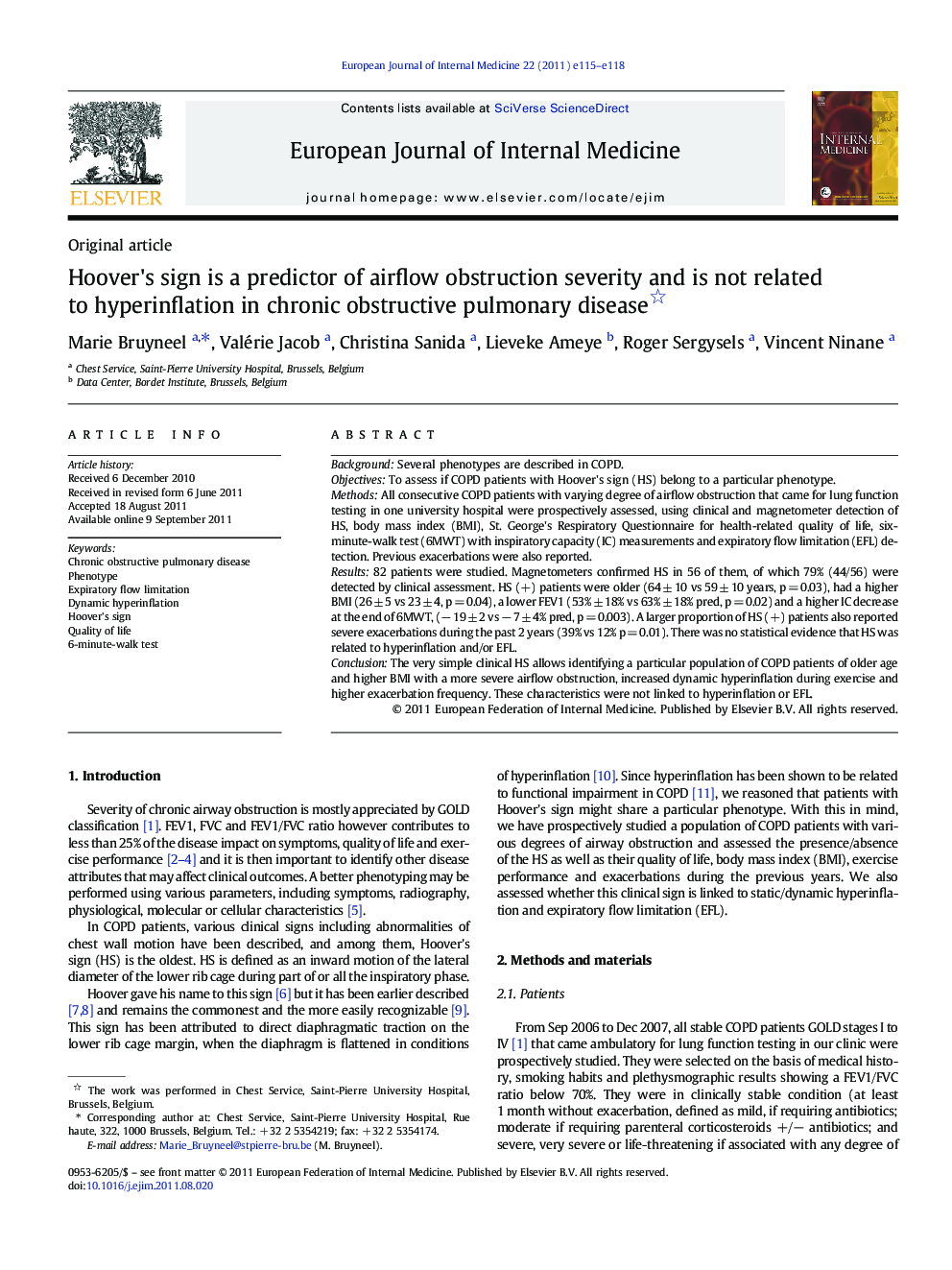| Article ID | Journal | Published Year | Pages | File Type |
|---|---|---|---|---|
| 3467929 | European Journal of Internal Medicine | 2011 | 4 Pages |
BackgroundSeveral phenotypes are described in COPD.ObjectivesTo assess if COPD patients with Hoover's sign (HS) belong to a particular phenotype.MethodsAll consecutive COPD patients with varying degree of airflow obstruction that came for lung function testing in one university hospital were prospectively assessed, using clinical and magnetometer detection of HS, body mass index (BMI), St. George's Respiratory Questionnaire for health-related quality of life, six-minute-walk test (6MWT) with inspiratory capacity (IC) measurements and expiratory flow limitation (EFL) detection. Previous exacerbations were also reported.Results82 patients were studied. Magnetometers confirmed HS in 56 of them, of which 79% (44/56) were detected by clinical assessment. HS (+) patients were older (64 ± 10 vs 59 ± 10 years, p = 0.03), had a higher BMI (26 ± 5 vs 23 ± 4, p = 0.04), a lower FEV1 (53% ± 18% vs 63% ± 18% pred, p = 0.02) and a higher IC decrease at the end of 6MWT, (− 19 ± 2 vs − 7 ± 4% pred, p = 0.003). A larger proportion of HS (+) patients also reported severe exacerbations during the past 2 years (39% vs 12% p = 0.01). There was no statistical evidence that HS was related to hyperinflation and/or EFL.ConclusionThe very simple clinical HS allows identifying a particular population of COPD patients of older age and higher BMI with a more severe airflow obstruction, increased dynamic hyperinflation during exercise and higher exacerbation frequency. These characteristics were not linked to hyperinflation or EFL.
